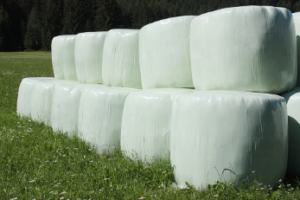Sustainable Alternatives to Baling Twine
Baling twine is an indispensable tool for farmers, yet its use poses risks to livestock and humans alike. Choking hazards exist, as well as digestive issues. Utilising sustainable alternatives may help limit its negative impact.
SilageWrap baling twine comprises various materials such as cotton, hemp and jute; some types may be food-grade safe for an oven, while others aren’t.
It is used in hay balers.
 Baling twine is used in hay balers to tie together farm material into bales. This process resembles using baling wire to tie boxcars together but requires more specialised equipment.
Baling twine is used in hay balers to tie together farm material into bales. This process resembles using baling wire to tie boxcars together but requires more specialised equipment.
Modern farmers have increasingly turned to synthetic baler twine as a time and labour saver, using polypropylene or other artificial plastics such as PVC that is treated against rot, mildew and rodents for enhanced resistance. Available online in different colours and lengths.
When purchasing SilageWrap baling twine, make sure to verify its tensile strength. This measurement indicates how much weight (in Kilogram Force) one unknotted piece can support without breaking. Knowing this number enables accurate calculations.
Since automatic reaper machines were first invented, a need for some mechanism to secure bundles of hay and straw bundles has become apparent. An iron chain binding device required considerable labour by workers riding alongside reapers – as an alternative, this was quickly replaced by machines that tied bundles using twine. As time progressed, it was determined that synthetic materials like polypropylene were stronger and better suited for large bales than sisal fibres.
It is used in a variety of applications.
Baling twine is a synthetic cord used to secure bales of hay or straw together. Often treated to resist rot, mildew and rodent infestation, baler twine also replaces metal fence wire by making movement safer for livestock grazing nearby. There is a variety of colours and strengths available that suit specific applications.
Farmers rely on baling twine to bind hay and other materials into round or square bales for storage, either manually or using machines called balers. Most baler twine comprises natural materials like sisal; however, modern balers may be equipped with artificial fibres like manetenvas.
SilageWrap baling twine can serve a multitude of household applications beyond agriculture. For instance, it can be woven into decorative baskets for potted plants, secure tarps, repair broken items, and make dog leashes. Baling twine is also an indispensable item in horse barns where emergency repairs or checks may arise, so having some handy can save time in emergency repairs and checks.
It is used to make a wall hanging.
Picking out the appropriate baling twine colour is vitally important to identify what type of bale you have easily and for productivity purposes and cost-per-bale goals. Many major baler manufacturers provide colour-coded systems to make this easier.
Baling twine has numerous applications in the garden, home, and craft projects. You can weave it to create a trellis for climbing vegetables like beans. Or use it to construct a hammock or seat on old wooden chairs – even make yourself a clothesline out of it!
An innovative and enjoyable way of recycling baling twine is winding it into balls each week – this saves money while helping the environment and creates a unique collector’s item!
It is used to tie up jolly balls.
Farmers often turn to baling twine as an economical and flexible means for tying jolly balls together, yet many are surprised at just how versatile the material can be. It can be used as an economical means to secure crops such as beans and other climbing vegetables, and it can even be transformed into mesh fences or trellises that allow sunlight in. Hammocks or chairs woven from it may even make great uses. Some artists even create baling twine art.
